Pterodon
202120202120Pterodon (†Pterodon (Blainville, 1839))
Class: Mammalia
Order: †Hyaenodonta
Family: †Hyainailouridae
Time period: ELate Eocene to early Oligocene 37.0–33.4 Ma (western Europe)
Size: Weight estimated at up to 52 kg.
Pterodon is an extinct genus of hyaenodont in the family Hyainailouridae, containing two species. The type species Pterodon dasyuroides is known exclusively from the late Eocene to the earliest Oligocene of western Europe. Although the taxonomic status of Pterodon was revised during the late 19th and early 20th centuries, it became a wastebasket taxon for other hyaenodont species found in Africa and Asia. Today, only the type species is recognized as belonging to the genus while just one is pending reassessment to another genus.
P. dasyuroides had cranial and dental characteristics typical of the Hyainailouridae such as an elongated, narrow, and proportionally large skull which measures ~26 cm in length and dentition for hypercarnivorous diets and bone-crushing similar to modern hyenas. Due to the scarcely known postcranial materials of the species, its overall anatomy is unknown, although it likely weighed up 52 kg and may have been similar to another Eocene-aged European hyainailourine Kerberos.
It was since 2015 that Floréal Solé et al. proposed the clade Hyainailouridae, uniting the Hyainailourinae and Apterodontinae under the family and therefore making it taxonomically differentiated from the Hyaenodontidae. They also suggested usage of the hyainailourine tribes Hyainailourini (where Pterodon was classified) and Paroxyaenini.
The order Hyaenodonta (replacing the now-invalidated clade Creodonta) is known first from the middle Paleocene of Afro-Africa, expanding to both Europe and Asia from Afro-Arabia in multiple "out-of-Africa" dispersal events. Although the true origins of the Hyainailouroidea is somewhat ambiguous, the Bayesian topologies support evidence that the Hyainailourinae, Apterodontinae, and Teratodontinae all had Afro-Arabian origins. Hyaenodonts made their first appearances in Europe in terms of the Paleogene (or early Eocene), mostly predominantly the Proviverrinae. As a result, the endemic hyaenodonts and carnivoraforms remained the two only carnivorous mammal groups for much of the Eocene of Europe. Hyaenodonts were more diverse than carnivoraforms for much of the Eocene and increased in diversity with the appearances of the hyainailourines. The former group likely dispersed from Africa while the latter may have dispersed from Asia. Compared to the proviverrines which never exceeded 20 kg, the hyainailourines were much larger in size.
Pterodon (†Pterodon (Blainville, 1839))
Class: Mammalia
Order: †Hyaenodonta
Family: †Hyainailouridae
Time period: ELate Eocene to early Oligocene 37.0–33.4 Ma (western Europe)
Size: Weight estimated at up to 52 kg.
Pterodon is an extinct genus of hyaenodont in the family Hyainailouridae, containing two species. The type species Pterodon dasyuroides is known exclusively from the late Eocene to the earliest Oligocene of western Europe. Although the taxonomic status of Pterodon was revised during the late 19th and early 20th centuries, it became a wastebasket taxon for other hyaenodont species found in Africa and Asia. Today, only the type species is recognized as belonging to the genus while just one is pending reassessment to another genus.
P. dasyuroides had cranial and dental characteristics typical of the Hyainailouridae such as an elongated, narrow, and proportionally large skull which measures ~26 cm in length and dentition for hypercarnivorous diets and bone-crushing similar to modern hyenas. Due to the scarcely known postcranial materials of the species, its overall anatomy is unknown, although it likely weighed up 52 kg and may have been similar to another Eocene-aged European hyainailourine Kerberos.
It was since 2015 that Floréal Solé et al. proposed the clade Hyainailouridae, uniting the Hyainailourinae and Apterodontinae under the family and therefore making it taxonomically differentiated from the Hyaenodontidae. They also suggested usage of the hyainailourine tribes Hyainailourini (where Pterodon was classified) and Paroxyaenini.
The order Hyaenodonta (replacing the now-invalidated clade Creodonta) is known first from the middle Paleocene of Afro-Africa, expanding to both Europe and Asia from Afro-Arabia in multiple "out-of-Africa" dispersal events. Although the true origins of the Hyainailouroidea is somewhat ambiguous, the Bayesian topologies support evidence that the Hyainailourinae, Apterodontinae, and Teratodontinae all had Afro-Arabian origins. Hyaenodonts made their first appearances in Europe in terms of the Paleogene (or early Eocene), mostly predominantly the Proviverrinae. As a result, the endemic hyaenodonts and carnivoraforms remained the two only carnivorous mammal groups for much of the Eocene of Europe. Hyaenodonts were more diverse than carnivoraforms for much of the Eocene and increased in diversity with the appearances of the hyainailourines. The former group likely dispersed from Africa while the latter may have dispersed from Asia. Compared to the proviverrines which never exceeded 20 kg, the hyainailourines were much larger in size.

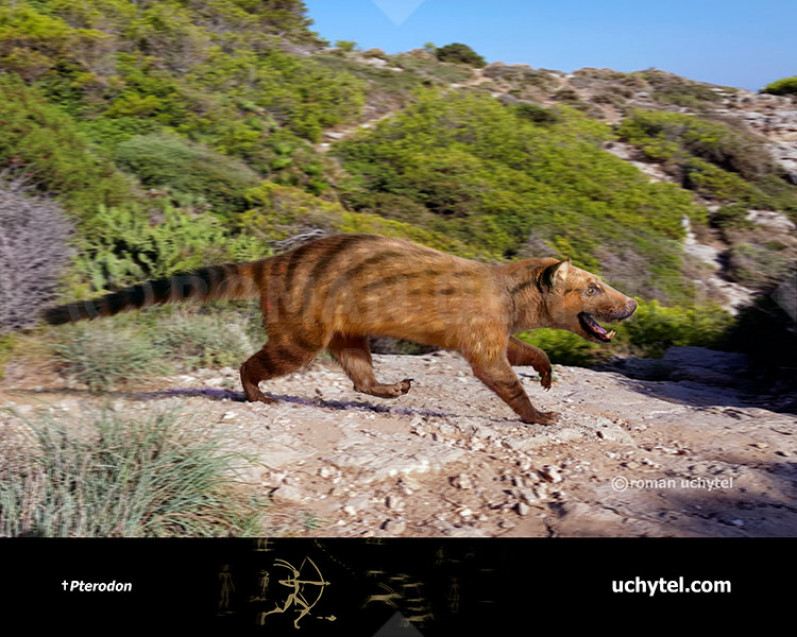
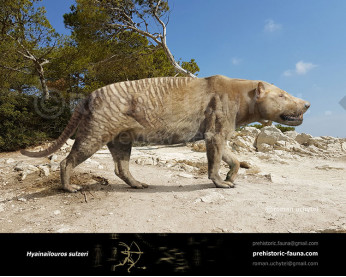
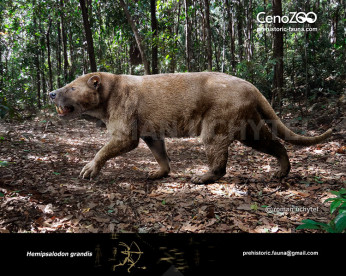
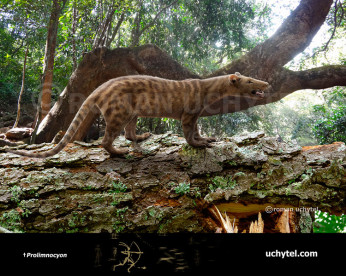
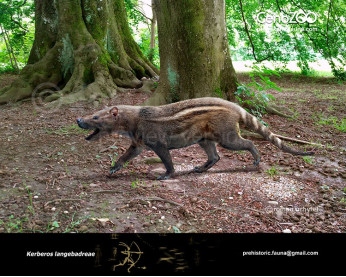
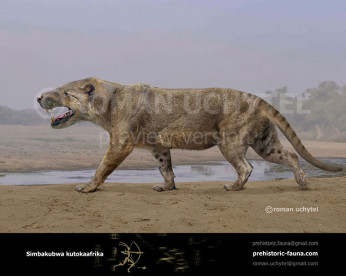
-346x277.jpg)